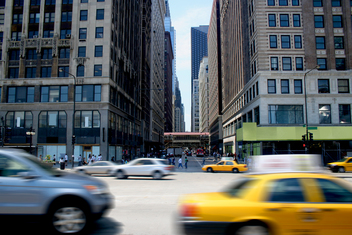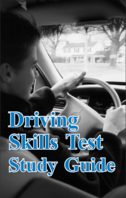
The busy, crowded environment of city driving is challenging for new drivers. City driving forces you to make lots of decisions quickly. The most important skill for drivers in these and other situations is the ability to make good decisions.
There are three things to focus on to drive safely in the city:
-
Visibility: to see potential problems in all directions
-
Space: to maneuver around obstacles and avoid hazards
-
Time: to anticipate risks and make adjustments to speed or position
Congested city driving leaves very little room for error. Identifying and anticipating potential problems is crucial. When you are driving on city streets, be on alert for the following hazards, which are only some of the possibilities you may encounter:
- Parked cars, cars entering or exiting parking spaces, and car doors opening
- Delivery trucks stopping suddenly, with drivers racing to and from the trucks
- Buses making frequent stops, loading and unloading passengers
- Blind alleys, with cars or cyclists darting out
- Pedestrians and cyclists moving unpredictably, such as crossing streets illegally.
- Limited visibility and intersections spaced at shorter intervals
- Aggressive drivers competing for lane space and parking spots
- Stop-and-go traffic flow
Information excerpted from the Parent's Supervised Driving Guide, an exceptional resource for families with young drivers.
Taking the driving-skills test can be an intimidating experience for a teen driver. Make sure you're well prepared beforehand to ensure you're focused on safe driving.
 Before a teen driver may take the driving skills test, he or she must have successfully completed Segment 2 of the driver education course, and received the white Segment 2 Certificate of Completion. Your parent or guardian must sign a certification on your score sheet at the test confirming that you logged a minimum of 50 hours supervised driving which includes a minimum of 10 hours at night (or you must present a certification signed by a parent or guardian, if one is not at your test).
You'll need to bring the Segment 2 Certificate of Completion, your Level 1 License and a valid vehicle registration and proof of insurance to the test. You must be accompanied by a parent, guardian, or an adult approved in writing by a parent or guardian.
|
Driving skills tests are provided by independent third-party testing organizations approved by the department. The driving skills test consists of two parts, a basic control skills test and an on-the-road driving test.
Find a driving skills test administrator near you with this regularly updated list:
|